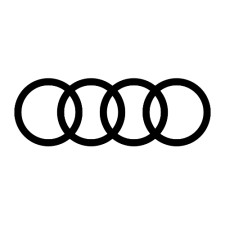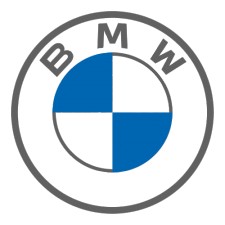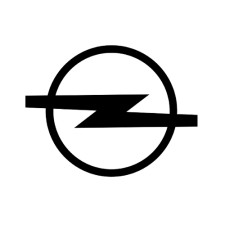Que signifie votre code Code Défaut TOYOTA ?
Grace au système OBD, les
Toyota
fabriqués après 1996 sont normalement équipés d'une prise diagnostique OBD.
Si l'ordinateur de la voiture rencontre un problème,un code d'erreur ou un code de diagnostic (DTC)
sera stocké dans la mémoire de l'ECU de la voiture.
Avec un lecteur OBD branché sur le port OBD (On-Board Diagnostics) de la voiture, vous pouvez lire la liste des codes stockés, et donc découvrir quel est le problème.
Les codes suivent une formule permettant de savoir généralement quel est le problème avant même de regarder le tableau ci-dessous.
Nous vous présentons ci-dessus une liste très complète des différents codes défauts possibles.
Si le code défaut de votre auto s'affiche au tableau de bord, vous n'aurez peut-être même pas besoin d'un lecteur OBD . il sera dans la liste .
Réparer le code défaut de votre auto, c'est potentiellement simple à faire avec vos revues et méthodes techniques.

Réparer le code défaut de votre auto, c’est potentiellement simple à faire avec nos revues et méthodes techniques
| Code | Libellé |
|---|---|
| P2E85 | Battery charger 2 input voltage sensor circuit low |
| P2E86 | Battery charger 2 input voltage sensor circuit high |
| P2E8C | Battery charger 2 charge sequence signal 1 circuit high |
| P2E8D | Battery charger 2 charge sequence signal 1 circuit low |
| P2E8E | Battery charger 2 charge sequence signal 2 circuit high |
| P2E8F | Battery charger 2 charge sequence signal 2 circuit low |
| P2E90 | Battery charger 1 internal power supply performance |
| P2E91 | Battery charger 2 internal power supply performance |
| P2EB4 | High-voltage battery inductive charger high voltage interlock circuit/open |
| P2EB5 | High-voltage battery inductive charger input voltage low |
| P2EB6 | High-voltage battery inductive charger input voltage high |
| P2EBF | Battery charging mode switch stuck |
| P3000 | HV Battery Malfunction |
| P3000 | Battery control system |
| P3001 | DSL solenoid circuit high |
| P3002 | Battery control system |
| P3004 | Battery control unit fault |
| P3004 | High Voltage Power Resource |
| P3004 | Power Cable Malfunction |
| P3005 | High-voltage serial communication fault |
| P3007 | High-voltage fuse snapped |
| P3007 | Plausibility with Engine Filling Too Low Measured MAF |
| P3008 | Plausibility with Engine Filling Too High Measured MAF |
| P3034 | Motorized Throttle Valve: Too High Current During Too Long Time |
| P3076 | Battery voltage detective line snapped |
| P3077 | Temperature battery voltage detective line 2 snapped |
| P3100 | Battery voltage detective line 3 snapped |
| P3101 | Battery voltage detective line 4 snapped |
| P3102 | High-voltage control unit |
| P3106 | Transmission control unit |
| P3107 | Communication (battery -> HV) |
| P3107 | Airbag ECU Communication Circuit Malfunction |
| P3108 | Communication (engine -> HV) |
| P3109 | Lost communication with the airbag system control unit |
| P3110 | IGCT Relay Malfunction |
| P3110 | Lost communication with the air-conditioning system control unit |
| P3115 | Communication (BRK -> HV) |
| P3120 | High-voltage main relay |
| P3133 | Communication Error from Generator to Drive Motor 'A' |
| P3134 | Communication Error from Drive Motor 'A' to Generator |
| P3135 | Inverter |
| P3147 | Transmission Malfunction |
| P3148 | Cylinder 1 High Pressure Injector High Side Circuit Shorted to Coil |
| P314A | Inverter Coolant Pump Speed Signal |
| P3151 | Cylinder 2 High Pressure Injector High Side Circuit Shorted to Coil |
| P3154 | Cylinder 3 High Pressure Injector High Side Circuit Shorted to Coil |
| P3157 | Cylinder 4 High Pressure Injector High Side Circuit Shorted to Coil |
| P3191 | Cruise control vehicle sensor |
| P3193 | Fuel Run Out |
| P3211 | Engine starting failure |
| P3212 | Fuel run-out |
| P3226 | Alternator inverter temperature sensor circuit high |
| P323B | Backup Boost Converter |
| P3400 | Cylinder deactivation system (bank 1) |
| P3401 | Cylinder 1 deactivation/inlet valve control circuit/open |
| P3402 | Cylinder 1 deactivation/inlet valve control performance |
| P3403 | Cylinder 1 deactivation/inlet valve control circuit low |
| P3404 | Cylinder 1 deactivation/inlet valve control circuit high |
| P3409 | Cylinder 2 deactivation/inlet valve control circuit/open |
| P3410 | Cylinder 2 deactivation/inlet valve control performance |
| P3411 | Cylinder 2 deactivation/inlet valve control circuit low |
| P3412 | Cylinder 2 deactivation/inlet valve control circuit high |
| P3417 | Cylinder 3 deactivation/inlet valve control circuit/open |
| P3418 | Cylinder 3 deactivation/inlet valve control performance |
| P3419 | Cylinder 3 deactivation/inlet valve control circuit low |
| P3420 | Cylinder 3 deactivation/inlet valve control circuit high |
| P3425 | Cylinder 4 deactivation/inlet valve control circuit/open |
| P3426 | Cylinder 4 deactivation/inlet valve control performance |
| P3427 | Cylinder 4 deactivation/inlet valve control circuit low |
| P3428 | Cylinder 4 deactivation/inlet valve control circuit high |
| P3433 | Cylinder 5 deactivation/inlet valve control circuit/open |
| P3434 | Cylinder 5 deactivation/inlet valve control performance |
| P3435 | Cylinder 5 deactivation/inlet valve control circuit low |
| P3436 | Cylinder 5 deactivation/inlet valve control circuit high |
| P3441 | Cylinder 6 deactivation/inlet valve control circuit/open |
| P3442 | Cylinder 6 deactivation/inlet valve control performance |
| P3443 | Cylinder 6 deactivation/inlet valve control circuit low |
| P3444 | Cylinder 6 deactivation/inlet valve control circuit high |
| P3449 | Cylinder 7 deactivation/inlet valve control circuit/open |
| P3450 | Cylinder 7 deactivation/inlet valve control performance |
| P3451 | Cylinder 7 deactivation/inlet valve control circuit low |
| P3452 | Cylinder 7 deactivation/inlet valve control circuit high |
| P3457 | Cylinder 8 deactivation/inlet valve control circuit/open |
| P3458 | Cylinder 8 deactivation/inlet valve control performance |
| P3459 | Cylinder 8 deactivation/inlet valve control circuit low |
| P3460 | Cylinder 8 deactivation/inlet valve control circuit high |
| P3465 | Cylinder 9 deactivation/inlet valve control circuit/open |
| P3466 | Cylinder 9 deactivation/inlet valve control performance |
| P3467 | Cylinder 9 deactivation/inlet valve control circuit low |
| P3468 | Cylinder 9 deactivation/inlet valve control circuit high |
| P3473 | Cylinder 10 deactivation/inlet valve control circuit/open |
| P3474 | Cylinder 10 deactivation/inlet valve control performance |
| P3475 | Cylinder 10 deactivation/inlet valve control circuit low |
| P3476 | Cylinder 10 deactivation/inlet valve control circuit high |
| P3481 | Cylinder 11 deactivation/inlet valve control circuit/open |
| P3482 | Cylinder 11 deactivation/inlet valve control performance |
| P3483 | Cylinder 11 deactivation/inlet valve control circuit low |
| P3484 | Cylinder 11 deactivation/inlet valve control circuit high |
| P3489 | Cylinder 12 deactivation/inlet valve control circuit/open |
| P3490 | Cylinder 12 deactivation/inlet valve control performance |
DEFINISSEZ VOTRE MARQUE POUR ACCEDER A VOS CODES DEFAUTS
-
Revue technique RTA

Revue Technique Automobile
La revue technique de référence depuis 1946. La RTA est une revue papier pour tous publics, qui vous permet d'effectuer les petites et les grosses réparations
 Voir le descriptif
Voir le descriptif
-
Entretien courant MTA

Méthode Technique Automobile
La MTA est issue de nos outils destinés aux pros de l'auto. Ces méthodes en ligne permettent d'effectuer les opérations de maintenances de votre auto (filtres, courroies, etc.)
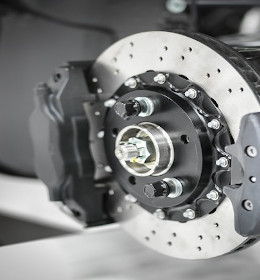 Voir le descriptif
Voir le descriptif
-
Toutes réparations MTAx

Méthode Technique Automobile Expert
La MTA expert est un outil en ligne destiné aux experts en mécanique et en carrosserie, pour effectuer tous types de réparations sur une voiture.
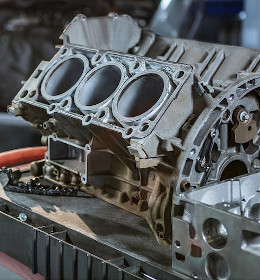 Voir le descriptif
Voir le descriptif




